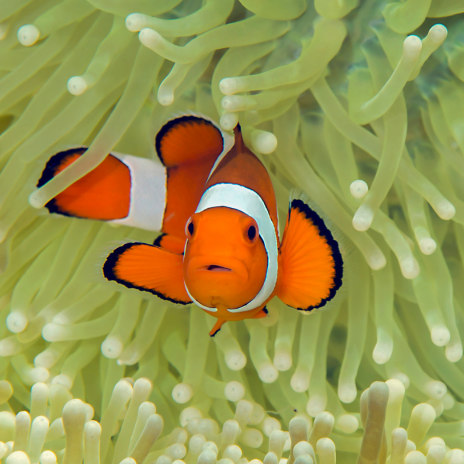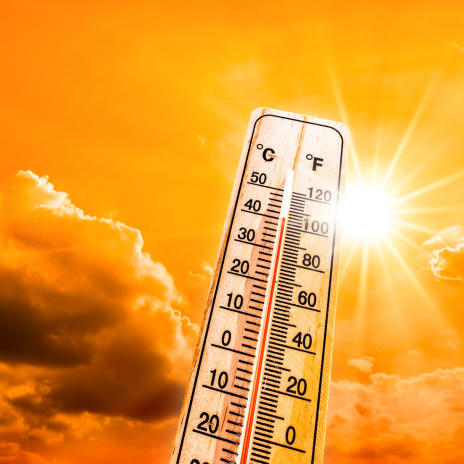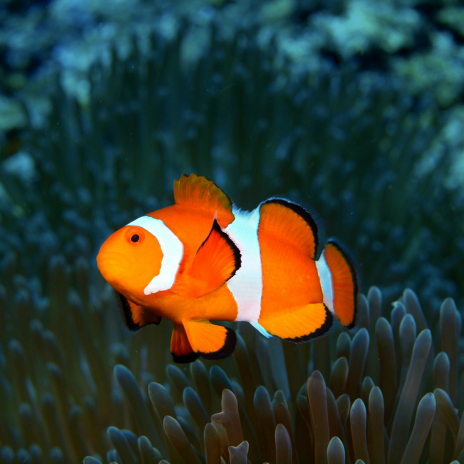Dwelling among coral reefs and known for their unique ways of sea life, clownfish are among the most recognizable saltwater fishes. Found in the warm and tropical waters of the Indo-Pacific, you may better know them from Disney Pixar’s Finding Nemo.
Renowned for their bright colors, relationship to anemones, and their ability to change sex, new studies have revealed another interesting trait about clownfish: they can shrink in size! This discovery is groundbreaking, as no coral reef fish has been found to do so before, and it may lead to a better understanding of marine life.
Heat As a Shrinkray
A team of researchers from Newcastle University, England monitored 134 clownfish off the coast of Papua New Guinea over five months at a conservation center in Kimbe Bay. Of the 134 clownfish studied, 100 were found to get shorter with increasing temperatures. Why? Shrinking was found to increase their chance of surviving a heat wave by up to 78%.
Scientists theorize that shrinking increases clownfish survival due to the fact that a shorter stature could help the clownfish save energy since smaller fish require less food. The rate at which they shrink also plays a role in survival: the researchers found that the males often adjust their size so as to stay smaller than their female partners. This keeps the female-dominated social hierarchy intact, as researchers have found.
This group of clownfish was observed during a marine heat wave in 2023. As a result of increasing global temperatures, heat waves are becoming more common and forcing underwater life to take on a more intense nature. These warm temperatures are bleaching the sea anemone that clownfish call home, and making them adapt in order to survive.
Scientists are intent on following this discovery to better provide a hypothesis as to why fish species may begin to decrease in size. As we step outside into hotter and hotter temperatures each day, it is important to remember that if we are affected, then our fellow ocean residents certainly are as well.
Helping Nemo
Being anemone homebodies is largely due to the clownfish’s small size and the countless predators they may encounter wandering away from home. Though shrinking may have its benefits, it also has its downfalls. It doesn’t help that as ocean temperatures continue to increase, marine ecosystems will only be affected further and clownfish will continue to decrease in size until they inevitably disappear.
So what can we do? If we want to help our anemone residents survive, we must first be mindful of our greenhouse gas emissions. We can:
- Use renewable energy like solar power or wind.
- Reduce, reuse, and recycle!
- Switch to electric vehicles.
- Encourage carpooling, biking, and walking.
- Reduce your waste.
- Adopt other dietary habits.
As Bruce from Finding Nemo recites: “I am a nice shark, not a mindless eating machine. If I am to change this image, I must first change myself. Fish are friends, not food.”
We can change our habits and reduce our consumption in order to help the other residents who inhabit this planet. Nemo has been our friend since childhood, and hopefully, he will not have to shrink himself any further in order to survive anthropogenic stressors.
References
Guy, J. (2025, May 22). “shrinking nemo”: Study finds clownfish can shrink to survive higher sea temperatures. CNN. https://www.cnn.com/2025/05/22/climate/shrinking-clownfish-study-scli-intl#:~:text=Clownfish%20live%20among%20sea%20anemones%20on%20coral%20reefs.&text=Clownfish%2C%20a%20small%20orange%20and,according%20to%20a%20new%20study
Ramakrishnan, A. (2025, May 28). Clownfish shrink their bodies to survive Ocean Heat Waves. AP News. https://apnews.com/article/clownfish-climate-change-anemone-heat-wave-81ba0d0fc26a7e3f65e25017facbaae1
Versteeg, M. A., Macdonald, C., Bennett-Smith, M. F., Buston, P. M., & Rueger, T. (2025, May 21). Individual clown anemonefish shrink to survive heat stress and social conflict. ScienceAdvances. https://www.science.org/doi/pdf/10.1126/sciadv.abc2931



